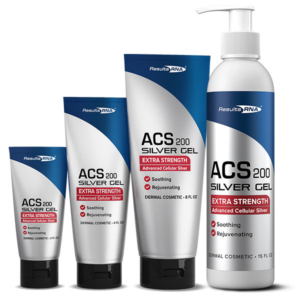Understanding Fungal Nail Infections: Causes, Symptoms, and Treatment Options
Fungal nail infections, also known as onychomycosis, are a common and often persistent problem affecting millions worldwide. This condition, caused by various types of fungi, can lead to discolored, thickened, and brittle nails. Understanding the causes, symptoms, and effective treatments for fungal nail infections is essential for maintaining healthy nails.
 What Causes Fungal Nail Infections?
What Causes Fungal Nail Infections?
Fungal nail infections occur when fungi, including dermatophytes, yeasts, and molds, invade the nail bed. Several factors can increase the risk of developing a fungal nail infection:
- Warm, Moist Environments: Fungi thrive in warm and humid conditions. Frequent exposure to such environments, like public swimming pools, locker rooms, and showers, can increase the risk of infection.
- Damaged Nails: Injuries to the nail or surrounding skin can provide an entry point for fungi.
- Health Conditions: Conditions like diabetes, psoriasis, and a weakened immune system can make individuals more susceptible to fungal infections.
- Age: Older adults are more prone to fungal nail infections due to reduced blood circulation and slower nail growth.
Symptoms of Fungal Nail Infections
Fungal nail infections can affect one or more nails and typically begin at the edge of the nail and slowly spread toward the cuticle. Common symptoms include:
- Discoloration: Nails may turn white, yellow, or brown.
- Thickening: Infected nails often become thickened and difficult to trim.
- Brittleness: Affected nails may become brittle, crumbly, or ragged.
- Distorted Shape: The shape of the nail can become distorted or irregular.
- Odor: In some cases, the infection can produce a foul odor.
Effective Treatment Options
Treating fungal nail infections can be challenging due to the resilient nature of fungi and the slow growth of nails. However, several treatment options can help eliminate the infection and restore nail health.
Topical Treatments
Topical antifungal medications are applied directly to the affected nails. These treatments include creams, gels, and medicated nail polish. For mild infections, topical treatments can be effective, but they often require prolonged use.
Oral Medications
Oral antifungal drugs, such as terbinafine and itraconazole, are commonly prescribed for more severe infections. These medications help the body fight off the infection from the inside out, leading to healthier nail growth over time. However, they can have side effects and may not be suitable for everyone.
Laser Therapy
Laser treatment is an emerging option that uses light energy to penetrate the nail and destroy the fungi. This method is relatively quick and painless, but it can be expensive and may require multiple sessions.
Natural Remedies
Some people prefer natural remedies to treat fungal nail infections. Essential oils like tea tree oil, oregano oil, and snakeroot extract have antifungal properties and can be applied topically. However, their effectiveness can vary, and they may not work for all individuals.
ACS 200 Silver Glutathione Gel: A Promising Solution
For those seeking an alternative or complementary treatment, ACS 200 Silver Glutathione Gel offers a promising solution. This gel combines the powerful antimicrobial properties of colloidal silver with the antioxidant benefits of glutathione, making it effective in combating fungal infections and promoting healthy nail growth.
The ACS 200 Silver Glutathione Gel works by targeting and neutralizing the fungi responsible for the infection, helping to restore the nail’s natural color and strength. Its easy application and rapid absorption make it a convenient option for those struggling with fungal nail infections.
Preventing Fungal Nail Infections
Preventing fungal nail infections involves maintaining good hygiene and adopting healthy nail care practices. Here are some tips to reduce the risk of infection:
- Keep Nails Clean and Dry: Regularly wash and dry your feet and hands, paying special attention to the areas between your toes.
- Wear Protective Footwear: Use sandals or water shoes in public showers, locker rooms, and pools.
- Trim Nails Properly: Trim your nails straight across and smooth the edges with a file to prevent injuries.
- Choose Breathable Footwear: Opt for shoes made from breathable materials and avoid tight-fitting footwear.
- Change Socks Regularly: Wear clean, dry socks and change them daily, especially if your feet sweat a lot.
Conclusion
Fungal nail infections can be stubborn and frustrating, but with the right treatment and preventive measures, you can achieve healthier nails. Understanding the causes, recognizing the symptoms, and exploring effective treatment options, including the innovative ACS 200 Silver Glutathione Gel, can help you combat this common condition. Prioritizing nail hygiene and seeking timely treatment are key steps in maintaining nail health and preventing future infections.


